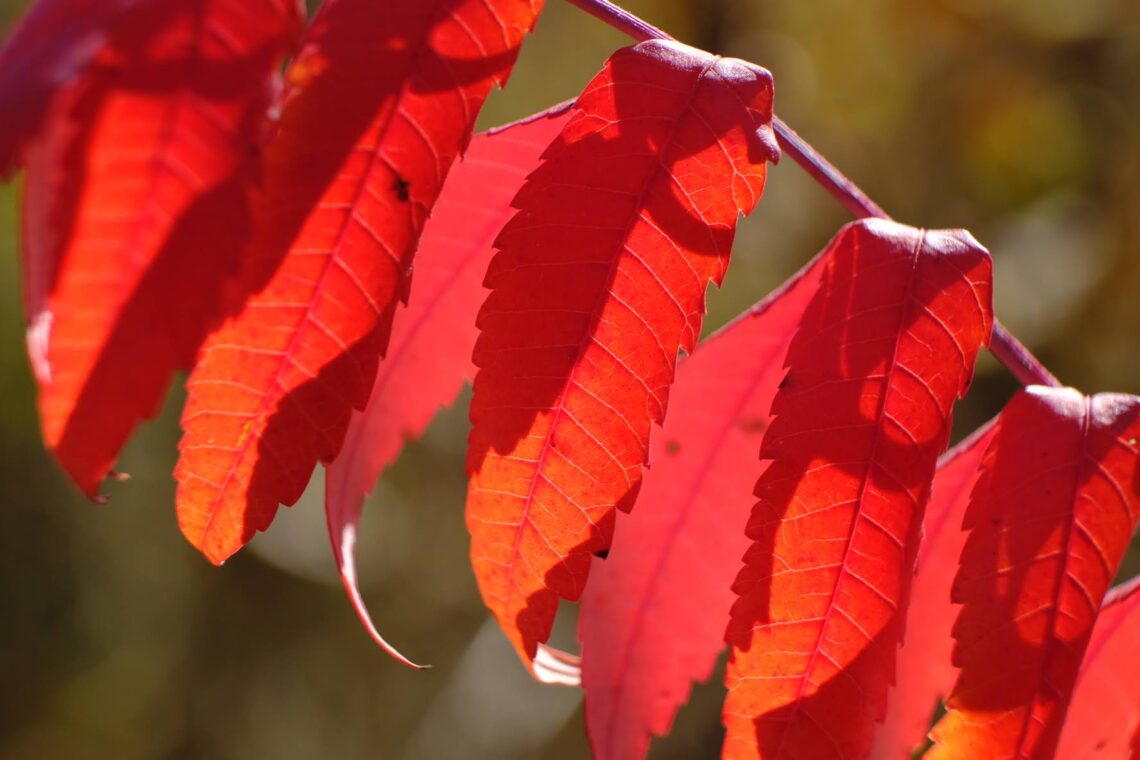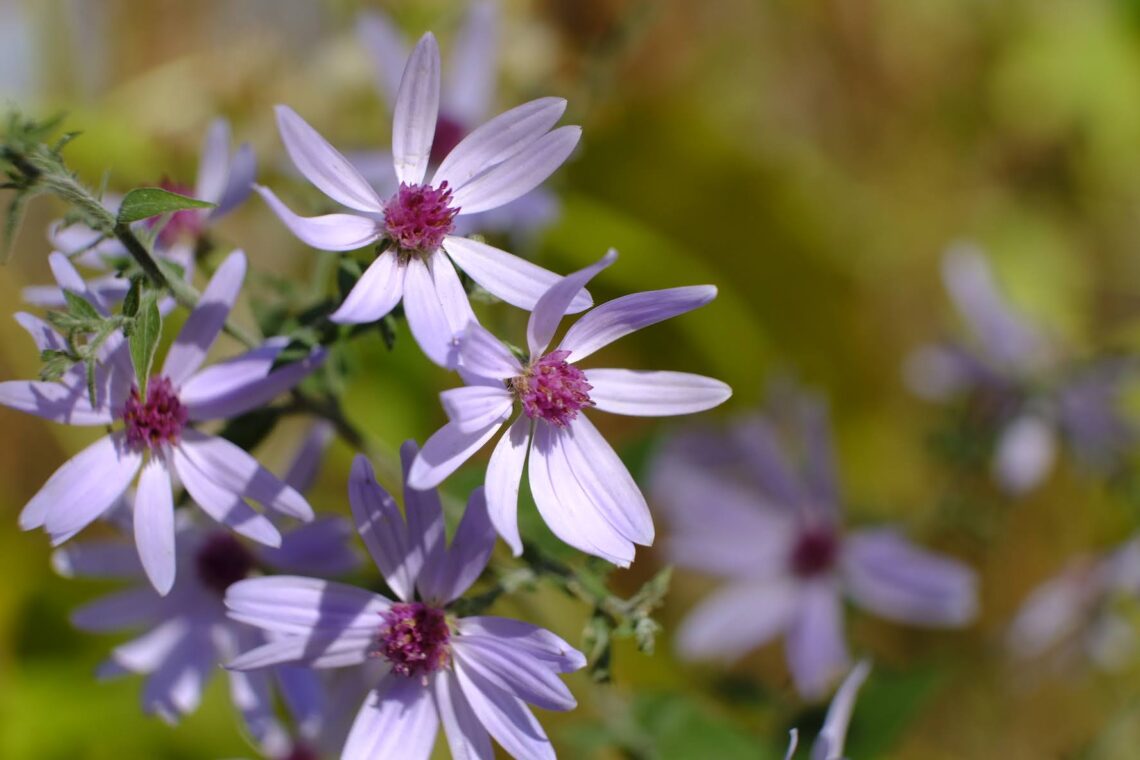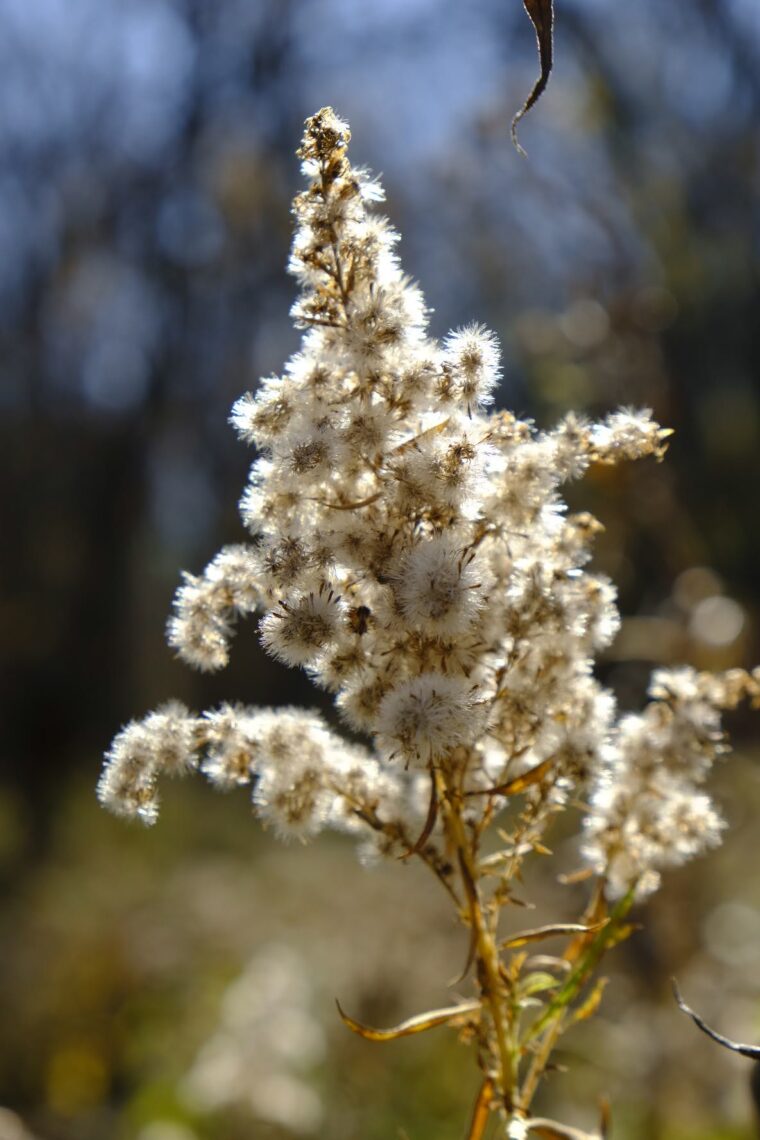Happy almost Halloween! As I walk around my neighborhood admiring all of the scary decorations and thinking about what I should dress up with my son as, it’s hard not to notice how colorful everything is right now. Some of the trees are so intensely orange and red that they look like they’re on fire. Nature’s palette is on full display right now so get outside and enjoy it! Here’s a little sample of some of the things I have discovered in the last few days.
I have a love-hate relationship with smooth sumac. It’s easy to see what makes it so pleasant this time of year. The vibrant red color of the foliage is breathtaking and is very easy to spot from a distance out in nature. While it is native to Wisconsin and provides food sources for many types of wildlife, it often gets very aggressive and can take over more sensitive habitat types like prairie and oak savanna.
Despite the chilly nights and early morning frosts, there are still quite a few flower species that are blooming. Asters are one of my favorite types of flowers because of how late in the season they hang on. Their color seems to pop a little extra because most of the plants they are surrounded by have died back for the year and have turned brown. These gorgeous whites, pinks, purples, and blues get to take center stage and I hope they stick around for just a little bit longer!
While the flowers of most species of goldenrod have come and gone, what’s arguably just as appealing to the eye is what comes after the flower. If you were to go for a hike at just about any natural area this time of year, you would likely find many different species of plants that look like they’re covered in snow.
This fluff is is responsible for allowing certain types of plants to travel. At the bottom of each piece of fluff is a tiny seed that gets carried off in the wind when the conditions are just right. Most people probably picture themselves as a kid blowing dandelions into the wind, but there are actually a ton of different plants that use this method of reproduction (think of milkweed or cottonwood).
Lastly, I’ll leave you with one more controversial plant (which seems fitting since it’s one of the last flowers to bloom depending on where you live). It’s called white snakeroot and it got it’s name because of an old belief that the root of this plant cured snakebites. It’s another plant that’s native to Wisconsin but can be very aggressive. I have some growing in my own yard and as long as you don’t let it spread too much, it’s not that bad!
What is bad, is how toxic this plant is. Back in colonial times, snakeroot was responsible for contaminating quite a bit of milk produced by cattle that consumed this plant while grazing. I think I’ll just enjoy snakeroot for it’s beauty and will skip eating it as an afternoon snack.
Well, I hope you enjoyed my virtual tour of nature as it’s happening. However you experience the outdoors or nature, be it physical, virtual, spiritual, or anything in between, I encourage you to do it!
*Did you miss an article? Check out my collection of past monthly Nature Now articles on our website HERE. Just click the dropdown menu ‘Any Type of News’ and change to ‘Nature Now’ to filter the articles.
See you next month!




